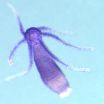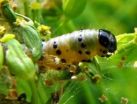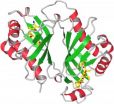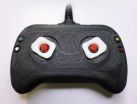(Press-News.org) Berkeley – Opening the door to the development of thought-controlled prosthetic devices to help people with spinal cord injuries, amputations and other impairments, neuroscientists at the University of California, Berkeley, and the Champalimaud Center for the Unknown in Portugal have demonstrated that the brain is more flexible and trainable than previously thought.
Their new study, to be published Sunday, March 4, in the advanced online publication of the journal Nature, shows that through a process called plasticity, parts of the brain can be trained to do something it normally does not do. The same brain circuits employed in the learning of motor skills, such as riding a bike or driving a car, can be used to master purely mental tasks, even arbitrary ones.
Over the past decade, tapping into brain waves to control disembodied objects has moved out of the realm of parlor tricks and parapsychology and into the emerging field of neuroprosthetics. This new study advances work by researchers who have been studying the brain circuits used in natural movement in order to mimic them for the development of prosthetic devices.
"What we hope is that our new insights into the brain's wiring will lead to a wider range of better prostheses that feel as close to natural as possible," said Jose Carmena, UC Berkeley associate professor of electrical engineering, cognitive science and neuroscience. "They suggest that learning to control a BMI (brain-machine interface), which is inherently unnatural, may feel completely normal to a person, because this learning is using the brain's existing built-in circuits for natural motor control."
Carmena and co-lead author Aaron Koralek, a UC Berkeley graduate student in Carmena's lab, collaborated on this study with Rui Costa, co-principal investigator of the study and principal investigator at the Champalimaud Neuroscience Program, and co-lead author Xin Jin, a post-doctoral fellow in Costa's lab.
Previous studies have failed to rule out the role of physical movement when learning to use a prosthetic device.
"This is key for people who can't move," said Carmena, who is also co-director of the UC Berkeley-UCSF Center for Neural Engineering and Prostheses. "Most brain-machine interface studies have been done in healthy, able-bodied animals. What our study shows is that neuroprosthetic control is possible, even if physical movement is not involved."
To clarify these issues, the scientists set up a clever experiment in which rats could only complete an abstract task if overt physical movement was not involved. The researchers decoupled the role of the targeted motor neurons needed for whisker twitching with the action necessary to get a food reward.
The rats were fitted with a brain-machine interface that converted brain waves into auditory tones. To get the food reward – either sugar-water or pellets – the rats had to modulate their thought patterns within a specific brain circuit in order to raise or lower the pitch of the signal.
Auditory feedback was given to the rats so that they learned to associate specific thought patterns with a specific pitch. Over a period of just two weeks, the rats quickly learned that to get food pellets, they would have to create a high-pitched tone, and to get sugar water, they needed to create a low-pitched tone.
If the group of neurons in the task were used for their typical function – whisker twitching – there would be no pitch change to the auditory tone, and no food reward.
"This is something that is not natural for the rats," said Costa. "This tells us that it's possible to craft a prosthesis in ways that do not have to mimic the anatomy of the natural motor system in order to work."
The study was also set up in a way that demonstrated intentional, as opposed to habitual, behavior. The rats were able to vary the amount of pellets or sugar water received based upon their own level of hunger or thirst.
"The rats were aware; they knew that controlling the pitch of the tone was what gave them the reward, so they controlled how much sugar water or how many pellets to take, when to do it, and how to do it in absence of any physical movement," said Costa.
Researchers hope these findings will lead to a new generation of prosthetic devices that feel natural.
"We don't want people to have to think too hard to move a robotic arm with their brain," said Carmena.
INFORMATION:
Co-author John Long, former UC Berkeley graduate student at the Helen Wills Neuroscience Institute and member of the Carmena lab, also collaborated in this study.
The National Science Foundation, Multiscale Systems Research Center, Defense Advanced Research Projects Agency, National Institute on Alcohol Abuse and Alcoholism, Marie Curie International, and the European Research Council helped support this research.
END
Scientists have shed light on how the liver repairs itself with research that could help develop drugs to treat liver disease.
Researchers at the Medical Research Council (MRC) Centre for Regenerative Medicine at the University of Edinburgh have discovered how to enhance the production of key cells needed to repair damaged liver tissue.
The study, published in the journal Nature Medicine, could help heal livers affected by diseases such as cirrhosis or chronic hepatitis.
Scientists were able to unpick the process of how different cells in the liver are formed.
When ...
Receding gums often result in tooth sensitivity and can lead to decay of the root and persistent inflammation of the gum. New research published in BioMed Central's open access journal Head & Face Medicine demonstrates that a novel method using bovine collagen is able to enhance gum healing. This resulted in thicker margins around the tooth and, in over half the cases, complete coverage of exposed roots.
Researchers across Germany and Switzerland led by Dr Shahram Ghanaati and the dentist Dr Markus Schlee investigated the possibility of using collagen, extracted from ...
In the absence of eyes, the fresh water polyp, Hydra magnipapillata, nevertheless reacts to light. They are diurnal, hunting during the day, and are known to move, looping end over end, or contract, in response to light. New research published in BioMed Central's open access journal BMC Biology shows that stinging cells (cnidocytes) in hydra tentacles, which the animals use for self protection and to catch prey, are linked via a simple nervous system to primitive light responsive cells that co-ordinate the animals' feeding behavior.
Hydra are members of a family of radially ...
Do your parents know where you are at night? According to 36 per cent of 15 year old boys and nearly a quarter of 15 year old girls the answer to that question, at least once a month, is no.
This is the finding from Understanding Society, a long term study of 40,000 UK households, which asked more than 2,000 10-15 year olds how frequently they stayed out past 9.00pm without their parents knowing where they were. The study, which is funded by the Economic and Social Research Council (ESRC), also found that staying out late without telling your parents is unrelated to ...
In nature, how do host species survive parasite attacks? This has not been well understood, until now. A new mathematical model shows that when a host and its parasite each have multiple traits governing their interaction, the host has a unique evolutionary advantage that helps it survive.
The results are important because they might help explain how humans as well as plants and animals evolve to withstand parasite onslaught.
The research, reported in the March 4 online edition of Nature, was supported by the National Institute for Mathematical and Biological Synthesis ...
Researchers working at the U.S. Department of Energy's (DOE) SLAC National Accelerator Laboratory have used powerful X-rays to help decipher how certain natural antibiotics defy a longstanding set of chemical rules – a mechanism that has baffled organic chemists for decades.
Their result, reported today in Nature, details how five carbon atoms and one oxygen atom in the structure of lasalocid, a natural antibiotic produced by bacteria in soil, can link into a six-membered ring through an energetically unfavorable chemical reaction. Unlocking this chemical pathway could ...
SALT LAKE CITY – University of Utah engineers designed a new kind of video game controller that not only vibrates like existing devices, but pulls and stretches the thumb tips in different directions to simulate the tug of a fishing line, the recoil of a gun or the feeling of ocean waves.
"I'm hoping we can get this into production when the next game consoles come out in a couple of years," says William Provancher, an associate professor of mechanical engineering who is in Vancouver, British Columbia, demonstrating the new game controller with his students March 5-7.
They ...
Details about Michigan "Cash for Clunkers" payout program have been announced. Under the NEW "Cash for Clunkers Michigan" or "Michigan Clunkers" program, consumers will be guaranteed a minimum of $2,500 trade-in towards any nicer, newer vehicle from a participating new car dealer when they trade in their old vehicle and purchase a qualifying vehicle.
In order to be eligible for the program, the trade-in passenger vehicle must be in drivable condition and be continuously insured and registered to the same owner for the full year before the ...
VIDEO:
Karen Bonuck, Ph.D., discusses her new research showing that young children with sleep-disordered breathing are prone to developing behavioral difficulties such as hyperactivity and aggressiveness, as well as emotional symptoms...
Click here for more information.
March 5, 2012 — (BRONX, NY) — A study of more than 11,000 children followed for over six years has found that young children with sleep-disordered breathing are prone to developing behavioral difficulties such ...
Due to the ongoing coverage of celebrity deaths that involve drug or alcohol abuse, many of those that are struggling with their own addictions have begun exploring what options may be available to them. This first step is always daunting though, and many individuals may be uncomfortable joining a cookie-cutter program that may not exactly fit their own needs and concerns. This is why Non 12 step rehab center, Prominence Treatment Center, is now offering its services to anyone that would like a unique and personalized strategy to beat their own addiction.
Addiction can ...




